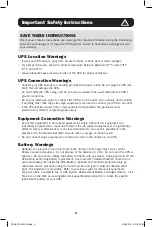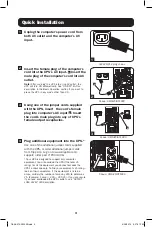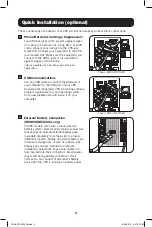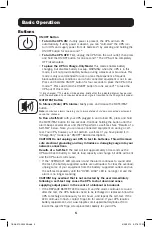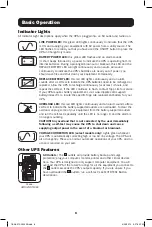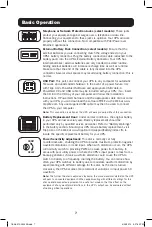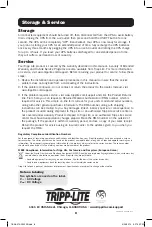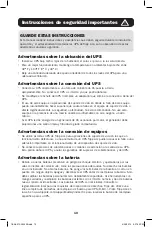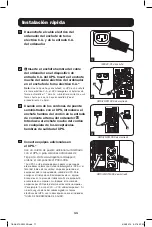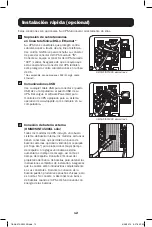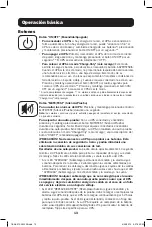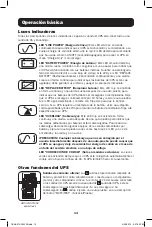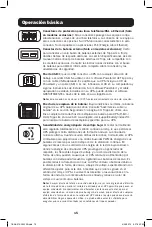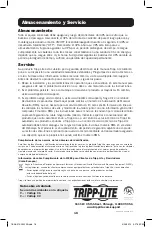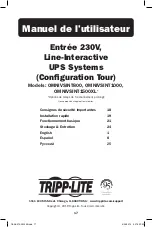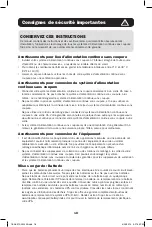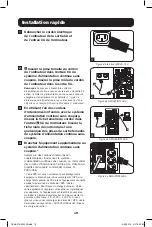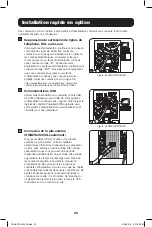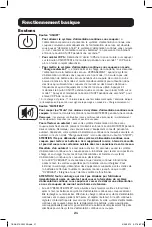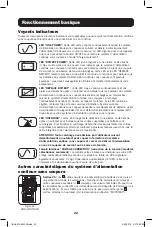
7
Basic Operation
NORM DELAY
Telephone or Network Protection Jacks (select models):
These jacks
protect your equipment against surges over a telephone or data line.
Connecting your equipment to these jacks is optional. Your UPS will work
properly without this connection. Not compatible with PoE (Power over
Ethernet) applications.
External Battery Pack Connection (select models):
Ensure that the
external batteries you are connecting match the voltage listed on your
UPS’s battery connector. Plug the battery connection cable (attached to the
battery pack) into the UPS’s External Battery Connector. Your UPS has
internal batteries; external batteries are only needed to extend runtime.
Adding external batteries will increase recharge time as well as runtime.
Make sure that the end of the cable is fully inserted into the UPS
connector. Several small sparks may result during battery connection; this is
normal.
USB Port:
This port can connect your UPS to any computer for automatic
file saves and unattended shutdown in the event of a power failure. Use
with Tripp Lite’s PowerAlert Software and appropriate USB cable. A
PowerAlert CD and USB cable may be included with your UPS; if so, insert
the CD into the CD tray of your computer and follow the installation
instructions. If PowerAlert Software and the appropriate cable did not come
with your UPS, you can download the software FREE via the Web at www.
tripplite.com. Any user-supplied USB cable may then be used to connect
the UPS to your computer.
Note:
This connection is optional. The UPS will work properly without this connection.
Battery Replacement Door:
Under normal conditions, the original battery
in your UPS will last several years. Battery replacement should be
performed only by qualified service personnel. Refer to “Battery Warnings”
in the Safety section. Should your UPS require battery replacement, visit
Tripp Lite on the Web at www.tripplite.com/support/battery/index.cfm to
locate the specific replacement battery for your UPS.
Power Sensitivity Adjustment:
This dial is normally set fully
counterclockwise, enabling the UPS to provide maximum protection against
waveform distortions in its AC input. When such distortion occurs, the UPS
will normally switch to providing PWM sine wave power from battery. In
areas with poor utility power or where the UPS’s input power comes from a
backup generator, chronic waveform distortion could cause the UPS to
switch to battery too frequently, draining the battery. You can reduce how
often your UPS switches to battery due to moderate waveform distortion by
experimenting with different settings for this dial. As the dial is turned
clockwise, the UPS becomes more tolerant of variations in input power AC
waveform.
Note:
The further the dial is adjusted clockwise, the more waveform distortion the UPS
will pass to connected equipment. When experimenting with different settings for this
dial, operate connected equipment in a safe test mode so that the effect on the
equipment of any waveform distortions in the UPS’s output can be evaluated without
disrupting critical operations.
DELAY
NORM
18-08-319-932205.indb 7
4/25/2019 5:27:42 PM


